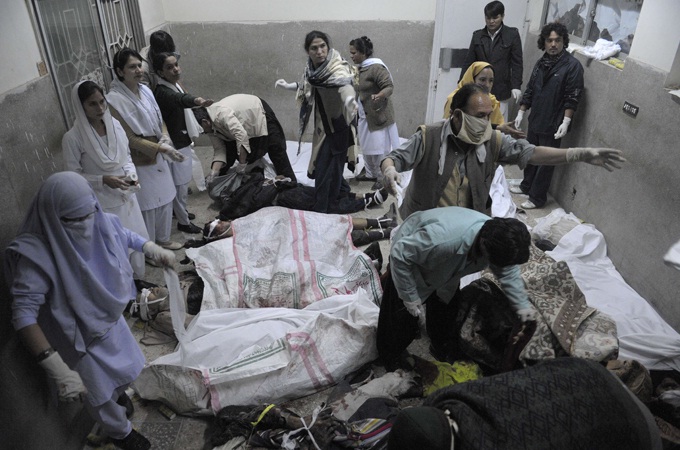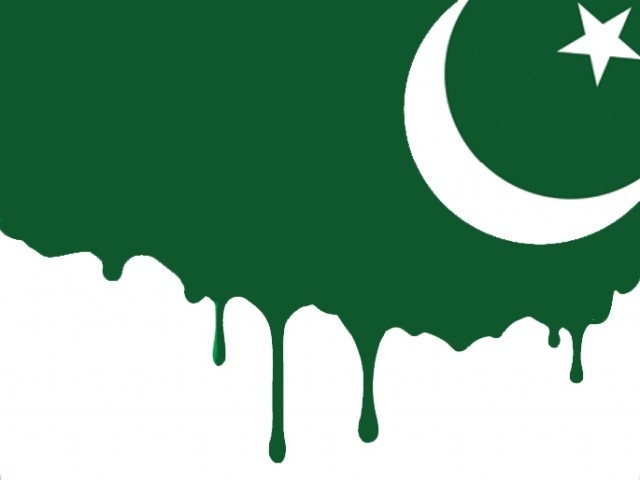By Umair Jamal
If Pakistan is to become truly terror free, it should be ready to pay any price to rein in the sectarian militant groups.
After a brazen terrorist attack on the Army Public School last year in Peshawar, Pakistan’s intensified counter-terrorism efforts under the National Action Plan (NAP), the country’s 20 point counter-terrorism strategy has resulted in a significantly reduced number of terror attacks. Pakistan’s decades old militant challenge, however, is multifaceted, and the NAP’s lone military operation in the northern areas is not likely to bring any long-term reprieve unless the problem of sectarian militancy is addressed as well. While Pakistan has made strategic gains in pushing the Taliban and other foreign militants out of its tribal areas, sectarian groups largely housed and active from its mainland remain intact.
According to the South Asia Terrorism Portal, since 1989, more than five thousand Pakistani civilians have lost their lives in sectarian attacks. After the formation of NAP, terrorism-related instability dwindled but incidents related to sectarian violence have surged; last year, 208 people died in sectarian attacks while in the last eight months, 202 people have already been killed.
Moreover, some of the deadliest sectarian incidents were recorded this year. In an imambargah bombing last January, more than 60 people were murdered in the Shikarpur district of Sindh province; two weeks later a mosque was bombed in Peshawar killing at least 19 people; and gunmenambushed a bus in Karachi in May killing 43 Ismaili. There have been numerous other incidents of lesser scale.
Malik Ishaq, imprisoned leader of Lashkar-e- Jhangvi (LeJ), a terrorist group that perpetrates Shia killings, was killed in a shoot out with the police when his supporters attempted to help him escape incarceration. Within just two weeks of his death, in a retaliatory attack, his group claimed responsibility for the killing of Punjab Home Minister Shuja Khanzada, who had taken a tough stance against sectarian outfits. Groups such as Jamaat-ul-Ahrar, Jundullah, Sipah-e-Sahaba Pakistan, Sunni Tehrik, Ahle Sunnat Wal Jamaat (ASWJ), Sipah-e-Muhammad, Tehrik-e-Jafaria, and LeJ have openly advocated sectarianism and their propensity to target religious minorities has significantly intensified.

Ironically, some of these sectarian groups if not all are believed to have close relations and enjoy considerable support from political parties. Despite being outlawed, some of these groups have openly contested elections in alliance with other political parties. Moreover, the leader of the prohibited ASWJ, Maulana Ahmed Ludhianvi, who has allegedly been responsible for the murder of thousands of Shias, has remained a member parliament.
Assets of these groups cannot be surveyed easily as most of the money comes from their local support through the madrassa system locals give charity to madrassas which is then diverted to support the groups. Despite the government’s recent declaration that the banned outfits are forbidden from charity collection, they have openly remained active. In order to garner their support base, they also remain vigorously involved in community services. Even after the NAP’s formation, which is intended to combat all forms of religious hatred, sectarian groups have openly held demonstrations and organized rallies. A few months ago, ASWJ protestedthe killings of their workers in Islamabad and even shut down the part of Constitution Avenue in front of the Supreme Court. Protesters only dispersed after the government promised to form a committee to investigate the murder.
The Islamic State’s presence has also surfaced in Pakistan and some of these sectarian groups have developed links with it. The group has reportedly vowed to unite all Pakistani militant groups, particularly sectarian, under its flag. Ishaq, the now deceased leader of LeJ, is said to have established close contacts with the group. The Islamic State’s name has also emerged in a number of recent terrorist attacks which had sectarian connotations like the May bus attack in Karachi that killed 43, which was claimed by Jundullah, an Islamic State-linked group.
Furthermore, these groups, while running hundreds of religious schools, work closely with each other to assist each other in their identical sectarian goals. In addition to provide training, they recruit and use each other’s madrassas as hideouts. According to a security official, quoted in the Wall Street Journal, “a person has one foot in Sipah-e-Sahaba and the other in Lashkar-e-Jhangvi.” The recent revenge attack on Khanzada was a collaborative act of the Jamaat-ul-Ahrar and LeJ. Jamaat-ul-Ahrar’s spokesman, Ishanullah Ihsan, while claiming responsibility for the suicide bombing that killed the home minister, said he was thankful “for cooperation of [another] brother Jihadi organization” which helped in carrying out the attack.
What is more alarming is that sectarian radicalization is no longer just confined to religious schools, but has also infiltrated the modern education system. Graduates from some of Pakistan’s most reputable institutes have been involved in recent sectarian terrorist attacks. Reportedly, one of the suicide bombers who killed Khanzada, was a graduate of the Punjab University.
Finally, unlike a military operation against the Pakistani Taliban, a military action against these groups will pose a paradoxical challenge. Many believe that if Pakistan is to become terror free then the real battle against extremism will have to be fought in Punjab which is a sanctuary and recruiting ground for many sectarian organizations. These groups’ networks and narratives they propagate are far more intricate and ominous than the Taliban.
In the past, sectarian organizations particularly the Sunni sects were openly allowed by the state to work and disseminate their hardline radical ideologies. This has now become part of the mainstream. Because of the state’s decades’ old geopolitical security policy to promote religious conservatism internally, these groups now enjoy significant support among masses regardless of their violent or non-violent outlook. Any kinetic operation against these groups would have serious implications.
There seems to be no immediate solution for the sectarian challenges Pakistan faces and any choice Pakistan makes will be costly. Regulations of the madrassas that support them in order to stem the tide of money flowing into their pockets are likely to be confronted by a fearsome opposition from the masses. And a military operation will cause not only physical destruction but may also result in disparaging the much needed supportive public opinion to carry out any military option. But the bottom-line is, if Pakistan is to become terror free, it should be ready to pay any price to rein in these groups and their terror loaded ideology.
Courtesy Foreign Policy


